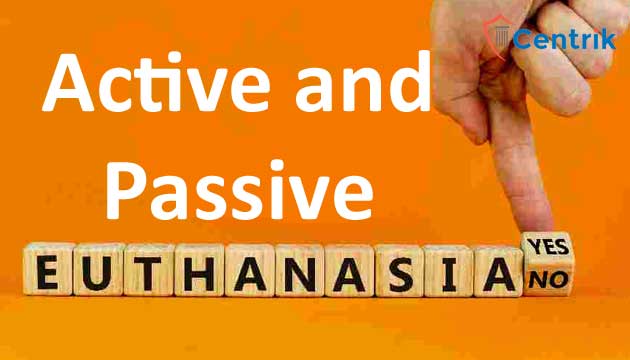
Status as on- 12/06/2023
Introduction:
Euthanasia, or the deliberate termination of a person’s life to relieve them of suffering, has long been a contentious and morally complex issue. It is broadly divided into two types: active euthanasia and passive euthanasia. The intentional act of administering lethal drugs or methods to end a person’s life is referred to as active euthanasia, whereas passive euthanasia refers to the withdrawal or withholding of medical treatment or life-sustaining measures that ultimately leads to death.
Criminal Law Perspective:
Section 302 of the Indian Penal Code, which defines culpable homicide as a punishable offense, makes active euthanasia illegal in India. However, the Supreme Court of India has partially decriminalized passive euthanasia in landmark decisions. The Aruna Shanbaug case decided in 2011, allowed for passive euthanasia under certain conditions. It ruled that in the event of irreversible illness or a vegetative state, a person can make an advance directive specifying their desire to withhold or withdraw life support. In addition, the court established a framework for the appointment of a medical board to review and approve such decisions.
This was the first time since the Gian Kaur case that the Supreme Court had permitted passive euthanasia under strict guidelines and conditions. However, the Supreme Court prohibited active euthanasia and stated that “ending life through the use of a lethal substance” is not permitted under any circumstances. In Common Cause v. Union of India and Others (2018), the Supreme Court ruled that Article 21’s fundamental right to life and dignity includes the right to die with dignity. Dignity is lost when a person is allowed or forced to endure pain and suffering as a result of unwarranted medical assistance.
Constitutional Law Perspective:
The Supreme Court has interpreted Article 21 of the Indian Constitution, which guarantees the right to life and personal liberty, to include the right to die with dignity. The Supreme Court upheld the constitutional validity of passive euthanasia in the landmark case of Common Cause v. Union of India in 2018 and recognized the concept of “living wills.” If there is no hope of recovery or quality of life, living will allow individuals to express their desire for passive euthanasia.
However, the court emphasized the importance of safeguards to prevent euthanasia from being used inappropriately. It required the formation of a medical board to review and approve the decision, ensuring proper checks and balances.
Ethical Considerations
The debate over euthanasia raises serious ethical concerns. Advocates argue that people should have the right to end their lives if they are in unbearable pain, arguing that it is a compassionate act of mercy. They argue that the patient’s autonomy should be respected, allowing them to have control over their own life and death.
Euthanasia opponents emphasize the sanctity of life and the risk of abuse or wrongful death. They are concerned about the slippery slope argument, fearing that legalizing euthanasia will result in involuntary euthanasia or the devaluation of certain lives.
What is the doctrine of the double effect commonly used in reference to cases concerning euthanasia?
According to the theory of double effect, it is ethically justifiable to carry out a morally right action that has an unintended unfavorable consequence. This is true even if one believes that a negative outcome is likely.
The aforementioned theory is used to support situations in which a medical practitioner administers medications to a patient despite knowing that doing so may shorten a patient’s life in order to alleviate distressing symptoms.
This occurs because the practitioner does not intend to intentionally kill the individual, and the tragic death is a by-product of the positive outcome of reducing the person’s misery.
Conclusion:
In India, active and passive euthanasia pose complex legal, ethical, and moral quandaries. While active euthanasia is still illegal, passive euthanasia has been decriminalized and is now recognized as a constitutionally protected right. In India, the legal framework surrounding euthanasia seeks to strike a balance between individual autonomy and stringent safeguards to prevent abuse. As society grapples with these complex issues, ongoing discussions and debates are required to shape a comprehensive and compassionate approach to end-of-life decisions that adhere to the principles of justice and humanity.
Disclaimer: The above article is based on the personal interpretation of the related orders and laws. The readers are expected to take expert opinions before relying upon the article. For more information, please contact us at ibc@centrik.in.




 join For Updates
join For Updates